The Benaki Museum in downtown Athens was an interesting destination last week since it concurrently held exhibitions of two major Greek artists.
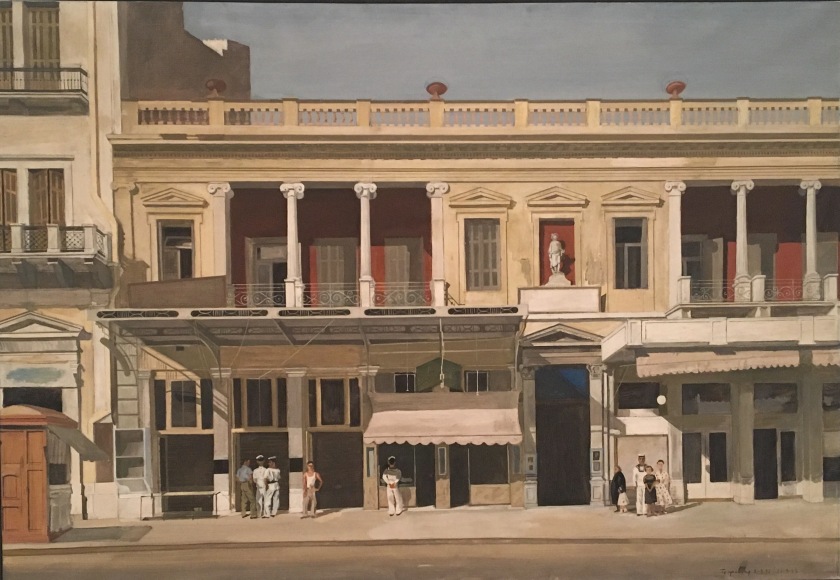
Yannis Tsarouchis was born Piraeus in 1910; he died in 1989 in Athens. The exhibition was curated on the occasion of the publication of a book on his life.
Tsarouchis studied at the Athens Academy of Fine Arts under the painters Vikatos and Parthenis and was initiated into Byzantine art by the famous hagiographist Kontoglou (1931-1934). Between the wars he travelled to Izmir, Istanbul, and Paris, where he became familiar with impressionism, cubism, and surrealism. He returned to Greece in 1940 and fought on the Albanian front.
Going into self-imposed exile with the advent of the Dictatorship in Greece, Tsarouchis lived in a small studio in Paris from 1967 to 1980. He met many artists, such as Giacometti, and was inspired by Courbet, Manet, Matisse, and cubism. He combined these influences with the teaching of his Greek masters, Parthenis and Kontoglou, the Karagiozi shadow theatre, the Fayum portraits, and the work of the primitive painter Theofilos. The result is a richness of form and colour, with a focus on the human figure, and especially the male nude.
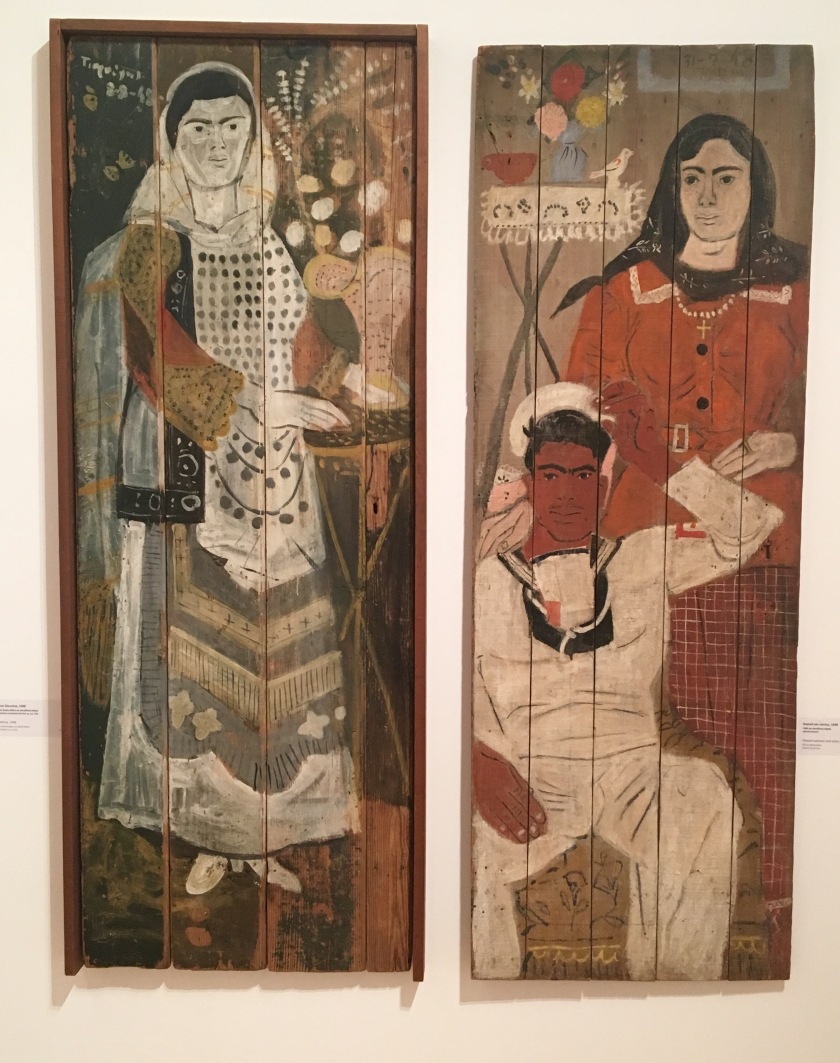
Tsarouchis liked to paint men in uniform, especially sailors. He liked to paint them naked, and sometimes he gave them angels’ wings. He also liked to paint the neoclassical buildings of Athens, which are frequently portrayed as an autonomous presence, rather than as subsidiary narrative elements.

Tsarouchis had a long collaboration with the well known gallery owner Iolas. He designed stage sets and costumes for the National Theatre, the Art Theatre, La Scala in Milan, the Dallas Opera, the Olimpico Theatre in Vicenza, and Covent Garden in London; and designed sets and costumes for films by Dassin and Kakoyannis. He also turned his attention to weaving, and illustrated a number of books (collections of poetry by Seferis, Elytis, and others). His style has influenced many Greek artists.

Although much younger than Tsarouchis – he was born in 1956 – Christos Bokoros is perhaps the less modern of the two.
Bokoros studied law at the Democritus University of Thrace (1974-1979) and later he joined the Athens School of Fine Arts (1983-1989), where he studied painting under D. Mytaras.
At the beginning of his career he employed traditional painting techniques, and drew his subjects from everyday life. The most striking feature of his early works was the extremely accurate and persuasive depiction of the visible world, a characteristic that governs his entire oeuvre. With time, he introduced allegorical or symbolic content to the depiction of simple things, contemplating their connotations; he began to integrate miscellaneous materials in his work (mainly old pieces of wood), and to combine his paintings with three-dimensional constructions and installations.

Bokoros loved the Greek countryside. He grew up far from the sea, in the tobacco fields of Agrinio, and was inspired by the earth and its produce: almond blossom, loaves of bread straight from the oven, rustling leaves and wild flowers.
He felt unable to identify with the major artworks he saw in foreign museums, and turned instead to the simple inspirations of provincial Greece.
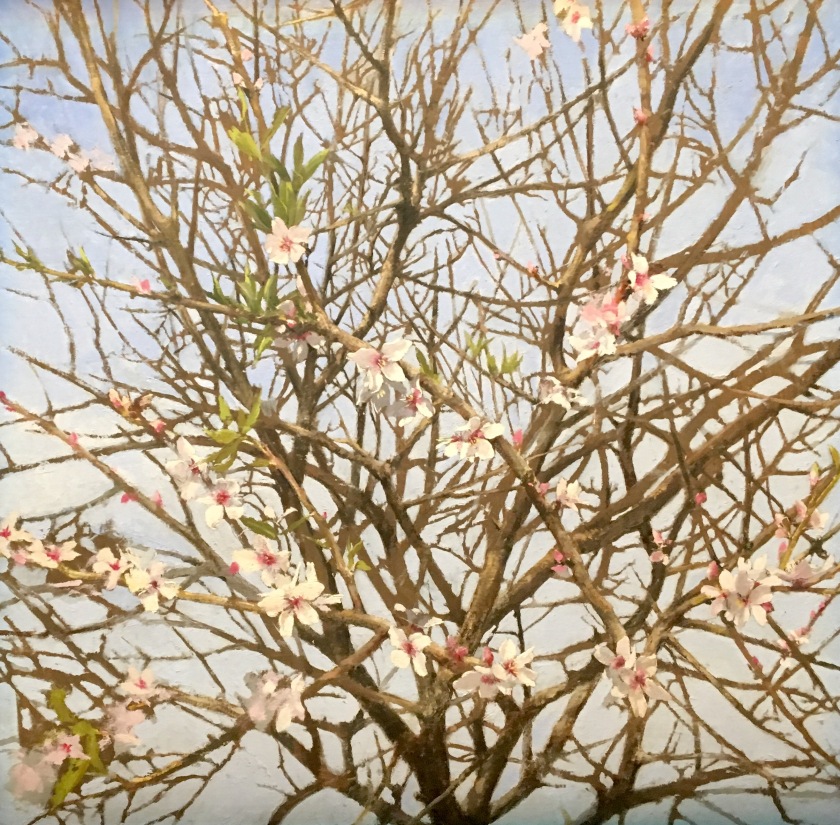
The key feature of his later oeuvre, i.e. the ritualistic repetition of certain motifs such as the flame, plays upon the correlation of the tangible with the intangible, the individual with the universal and the past with the present, sometimes interacting poetically and sometimes semantically.
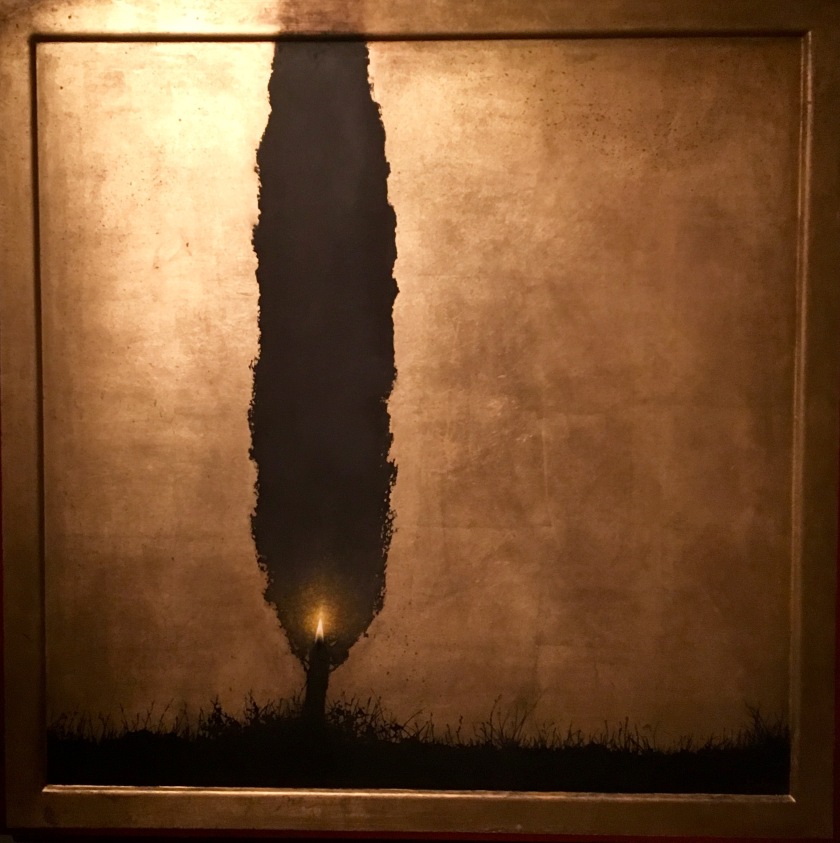
Like Tsarouchis, Bokoros also worked as stage designer, in theatrical productions of Greek plays (1995-2007).
He has presented his work in solo and group exhibitions in Greece and abroad, participating in international events, and he has been awarded many prizes.

The visit ended with lunch in the museum’s cosy bar.
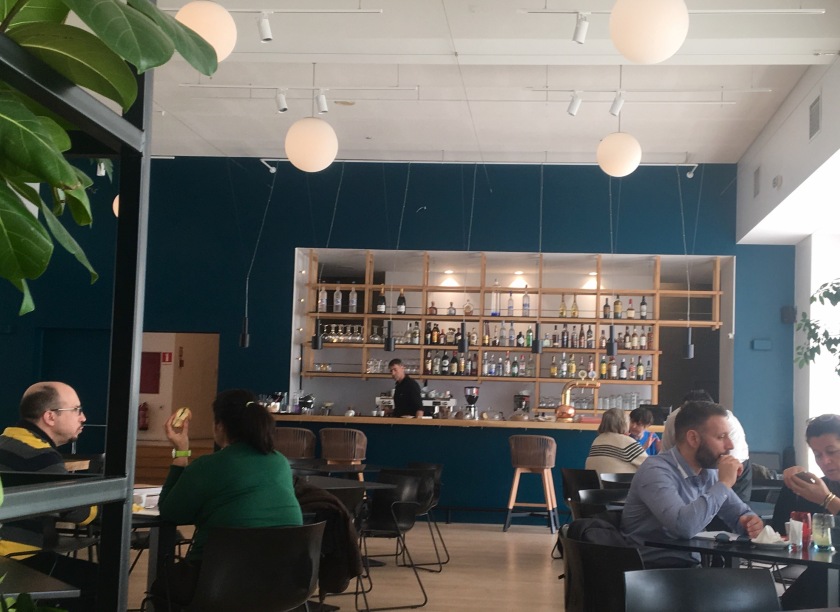
More art, on the way to the car.



Shared on my Facebook page: I have few friends but they are art lovers.
LikeLiked by 1 person
Thanks! 🌺
LikeLike
I already have comments. Tsarouchis is well loved. I am less “modern” and like Bokoros’ flowers and still life. I shall try to find some more examples of his painting on the net and publish them in days to come.
LikeLike
I thoroughly enjoyed this. I am late to the art appreciation stage of life. But it has hit me hard. I’m uneducated, but am loving the fact that I appreciate what I am seeing.
LikeLiked by 1 person
It’s not homework! No rules, just enjoyment…
LikeLike
I really am enjoying 🙂
LikeLiked by 1 person
Those flower paintings are extraordinary…
LikeLiked by 1 person
Thanks for showing us this, Marina. The first paintings reminded me of the style of Frida Kahlo.
Best wishes, Pete.
LikeLiked by 1 person
I’m glad you enjoyed it, Pete. Best wishes from me too 🌺
LikeLike
Tsarouchis is very powerful; I agree Bokoros is less modern. Thanks for the education ML
LikeLike
Wonderful exhibition! Must get down there when we return to Athens. Bokoros donated a lovely painting of an olive tree to the Olive Museum in Sparta which I love. I’ve seen a few of his other pieces and really admire his style. And, I agree, the cafe is great.
LikeLike
The reflected story in the young man’s face by Tsarouchis held my attention for some moments. He’s a wonderful artist.
The flowers, tree by Bokoros are wonderful! So realistic! The painting of the bread, wine, and olives on the table is fantastic! I love the light reflected on the table from the glasses. WOW!
Thanks for sharing these artists. I’d never heard of them or seen any of their works before.
LikeLiked by 1 person
I thought they might be of interest. The young man I think was a schizophrenic, but I wasn’t sure, so I didn’t say it…
LikeLiked by 1 person
Stunning…
LikeLiked by 1 person
I wouldn’t know any of this except for your post. Thank YOU for sharing. ❤
LikeLiked by 1 person
So glad you enjoyed it!🌺
LikeLike
beautiful – thank you
LikeLiked by 1 person
Loved reading this. Mention of Iolas brought back many memories of regularly visiting him in his gallery with my stepmother as a teenager – she was the widow of a painter, whose father was also a gallerist in Paris. She introduced me to art and the NY art world. Must have seen some of these paintings as a teenager… Thank you.
LikeLiked by 1 person
It’s a small world… I’m glad you enjoyed the post!🌺
LikeLiked by 1 person
Wow! Beautiful artwork! Thanks for introducing us to two artists that I’d not heard of. I can certainly see why artists would want to emulate Tsaurouchis. And I can stare at Bokoris’s florals all day long.
LikeLiked by 1 person
That painting of the young man’s face is remarkable! I do not always like portraits, but this one is exceptional.
LikeLiked by 1 person
Loved the paintings 🙂 Thanks for sharing 🙂
LikeLiked by 1 person
Thanks, Nayana. Glad you enjoyed them🌺
LikeLiked by 1 person
I love being educated in Greek art. The colors are so vivid. And the fact that these artists are stage designers, too, is quite interesting to me – a public sharing and fusing of their art with the written and spoken word.
LikeLiked by 1 person
So glad you enjoyed it. It’s impossible keeping up on everything, so it’s nice to be fed things in easy bites sometimes…😊
LikeLiked by 1 person
Interesting to see the work of these two Greek artists. Thanks for posting…
LikeLike